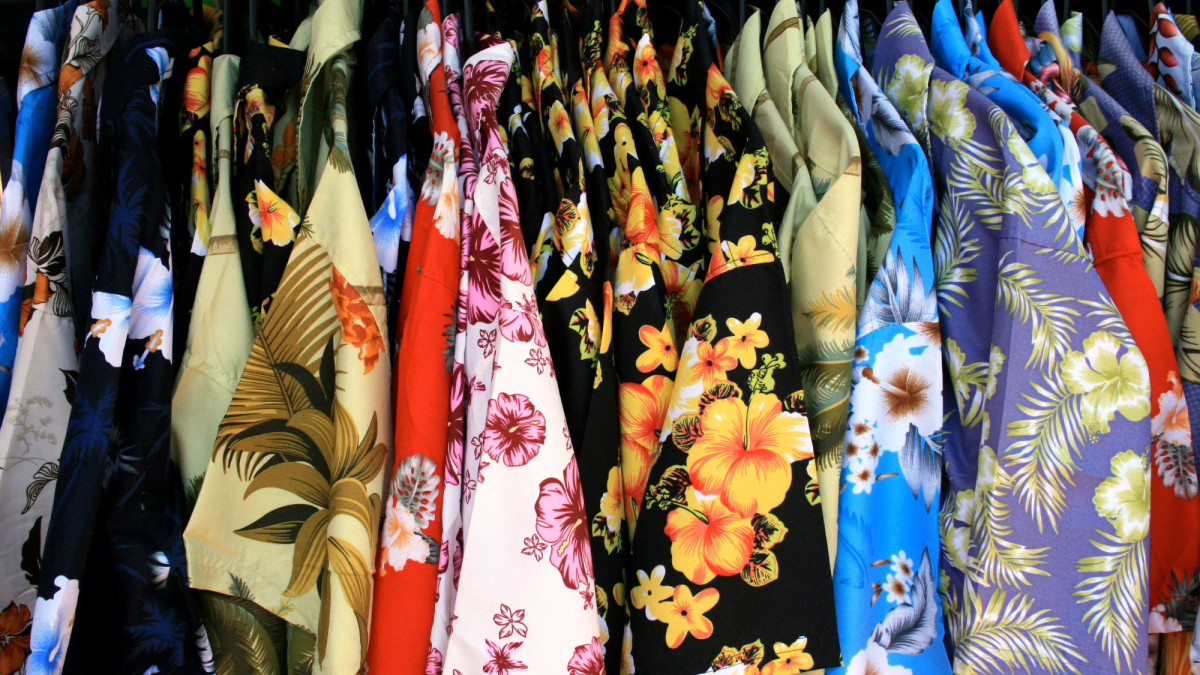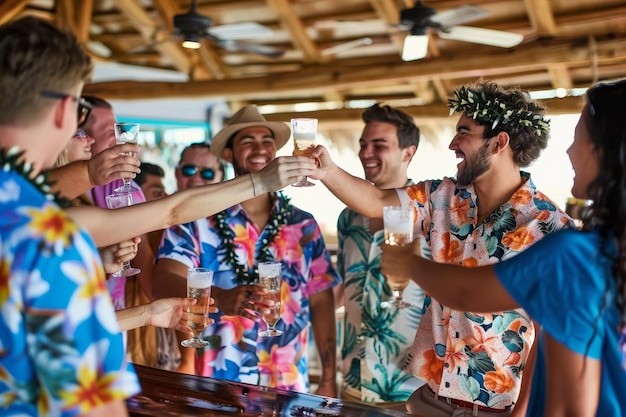Uncategorized
Aloha Shirt vs Hawaiian Shirt: Understanding the Difference Between These Iconic Tropical Garments
When browsing through tropical fashion or planning your next vacation wardrobe, you’ve likely encountered both terms: aloha shirt vs Hawaiian shirt. While these names are often used interchangeably, there are subtle yet important distinctions that every fashion enthusiast should understand. These vibrant, colorful garments have become synonymous with relaxed island living and casual elegance.
The confusion between these two terms isn’t surprising, as both represent the same general category of tropical-inspired clothing. However, understanding their origins, cultural significance, and modern applications can help you make more informed choices when adding these timeless pieces to your wardrobe.

The Historical Origins and Cultural Significance
The story of these iconic shirts begins in 1930s Hawaii, where local tailors and entrepreneurs began creating garments that would eventually become global fashion staples. The aloha shirt specifically emerged as a product of Hawaii’s multicultural melting pot, incorporating influences from Japanese, Filipino, and Portuguese immigrant communities.
Ellery Chun, a Honolulu-based tailor, is often credited with coining the term “aloha shirt” in 1936. He used colorful Japanese fabrics to create shirts that captured the spirit of Hawaiian hospitality and the islands’ natural beauty. The word “aloha” itself carries deep cultural meaning in Hawaiian tradition, representing love, peace, and the welcoming spirit of the islands.
Meanwhile, the broader term “Hawaiian shirt” developed as mainlanders and tourists began referring to any tropical-patterned shirt as originating from Hawaii, regardless of its actual manufacturing location or cultural authenticity. This generic terminology became widespread as the garments gained popularity on the mainland United States.

Key Differences in Design and Authenticity
The most significant distinction between aloha shirts and Hawaiian shirts lies in their authenticity and design philosophy. Genuine aloha shirts typically feature specific design elements that reflect Hawaiian culture and natural landscapes. These include native flora like plumeria, hibiscus, and bird of paradise flowers, as well as traditional Polynesian patterns and motifs.
Authentic aloha shirts often incorporate subtle cultural references that may not be immediately apparent to casual observers. Traditional designs might include outrigger canoes, volcanic landscapes, or stylized representations of Hawaiian legends and mythology. The color palettes tend to reflect the natural beauty of the islands, with sunset oranges, ocean blues, and tropical greens dominating the designs.
Hawaiian shirts, in the broader commercial sense, encompass a wider range of tropical-themed designs that may not necessarily have direct connections to Hawaiian culture. These can include generic palm trees, flamingos, pineapples, or other tropical imagery that evokes a vacation mood without specific cultural authenticity.
Fabric Quality and Construction Standards
Traditional aloha shirts are typically constructed with higher attention to detail and quality materials. Authentic versions often use cotton, silk, or rayon fabrics that drape well and provide comfort in warm climates. The printing processes for genuine aloha shirts frequently employ traditional techniques that ensure vibrant, long-lasting colors.
Mass-produced Hawaiian shirts, while still attractive and functional, may use synthetic blends or lower-grade materials to achieve more affordable price points. This isn’t necessarily negative, as modern manufacturing has made tropical-style shirts more accessible to broader audiences while maintaining reasonable quality standards.
Modern Usage and Fashion Context
In contemporary fashion, the distinction between aloha shirts and Hawaiian shirts has become increasingly blurred. Many retailers use both terms interchangeably, and consumers often prioritize style, fit, and personal preference over historical authenticity. This evolution reflects the global nature of modern fashion and the widespread appeal of tropical-inspired clothing.
The modern aloha shirt has found new life in professional settings, particularly in Hawaii where “Aloha Friday” allows business professionals to wear these shirts to work. This practice has spread to other warm-weather locations, making aloha shirts acceptable business casual attire in many industries.
Contemporary Hawaiian shirts have embraced fashion-forward approaches, incorporating modern design elements, updated fits, and innovative fabric technologies. Designers now create tropical-inspired shirts that work equally well for beach vacations, casual dining, or summer social events.
Celebrity Influence and Pop Culture Impact
Both aloha shirts and Hawaiian shirts have enjoyed significant celebrity endorsement throughout their history. From Elvis Presley’s iconic tropical shirts in “Blue Hawaii” to modern celebrities sporting vintage-inspired designs at red carpet events, these garments have maintained their cultural relevance across generations.
Television shows like “Magnum P.I.” and movies set in tropical locations have consistently featured these shirts, helping to cement their association with relaxed, confident masculinity and vacation-ready style. This media exposure has contributed to the continued popularity of both authentic aloha shirts and broader Hawaiian shirt styles.

Choosing Between Aloha Shirt vs Hawaiian Shirt
When deciding between an authentic aloha shirt and a general Hawaiian shirts, consider your intended use and personal values. If cultural authenticity and supporting Hawaiian businesses matter to you, seeking out genuine aloha shirts from local Hawaiian designers or established brands with island connections makes sense.
For casual wear, vacation clothing, or budget-conscious shopping, well-made Hawaiian shirts from reputable retailers can provide excellent value and style. The key is understanding what you’re purchasing and setting appropriate expectations for quality, authenticity, and cultural significance.
Consider factors like fabric quality, construction details, and design authenticity when making your selection. Look for shirts with matched patterns at the seams, quality buttons, and prints that don’t easily fade or crack with washing.
Styling Tips for Both Shirt Types
Both aloha shirts and Hawaiian shirts offer versatile styling options that extend far beyond beach vacations. For casual occasions, pair these shirts with khaki shorts, linen pants, or even well-fitted jeans for a relaxed yet put-together look.
In professional settings where tropical shirts are acceptable, choose designs with more subtle patterns and neutral color palettes. Navy backgrounds with small-scale prints often work better than bright, bold designs for business casual environments.
For evening events or dinner occasions, consider silk aloha shirts or premium Hawaiian shirts in darker colorways. These can be paired with dress pants and leather shoes for an elevated tropical look that maintains sophistication.

Care and Maintenance Considerations
Proper care ensures that both aloha shirts and Hawaiian shirts maintain their vibrant colors and comfortable fit over time. Most tropical shirts benefit from gentle washing in cool water with color-safe detergents to prevent fading and pattern bleeding.
Air drying is typically preferable to machine drying, as excessive heat can damage synthetic fabrics and cause shrinkage in natural fibers. When ironing is necessary, use low heat settings and consider placing a pressing cloth between the iron and the shirt to protect printed designs.
Storage considerations include hanging shirts properly to prevent wrinkles and avoiding overcrowded closets where patterns might transfer between garments. Cedar blocks or lavender sachets can help maintain freshness during long-term storage.
Investment Value and Longevity
High-quality aloha shirts often represent better long-term investments due to their superior construction and timeless designs. While the initial cost may be higher, these shirts typically maintain their appearance and structural integrity through years of wear and washing.
Mass-market Hawaiian shirts can provide excellent value for occasional wear or trend-conscious shoppers who prefer updating their tropical wardrobe regularly. Understanding your wearing patterns and budget constraints helps determine the most appropriate investment level.
Shopping Guide and Brand Recommendations
When shopping for authentic aloha shirts, look for brands with genuine Hawaiian connections and established reputations for quality. Companies like Reyn Spooner, Tori Richard, and Kahala have long histories of producing authentic island-style clothing with attention to cultural details and craftsmanship.
For Hawaiian shirts in general, many mainstream retailers offer attractive options at various price points. Brands like Tommy Bahama, Patagonia, and even department store house brands can provide stylish tropical shirts suitable for vacation wear and casual occasions.
Online shopping has made both authentic aloha shirts and Hawaiian shirts more accessible to customers worldwide. When shopping online, pay attention to sizing charts, return policies, and customer reviews to ensure satisfaction with your purchase.
Seasonal Considerations and Availability
The availability of both shirt types often fluctuates with seasonal demand. Spring and summer months typically offer the widest selection and best pricing, while fall and winter may present opportunities for clearance purchases but limited sizing options.
Planning ahead for vacation purchases or building a tropical wardrobe during off-peak seasons can result in significant savings and better selection. Many retailers begin stocking tropical clothing in late winter to capture early spring vacation shoppers.
“The beauty of both aloha shirts and Hawaiian shirts lies not just in their vibrant patterns, but in their ability to instantly transport the wearer to a more relaxed, optimistic state of mind.” – Fashion Historian
Cultural Sensitivity and Respectful Wearing
When wearing either aloha shirts or Hawaiian shirts, it’s important to approach these garments with respect for their cultural origins. Understanding the difference between appreciation and appropriation helps ensure that wearing tropical-inspired clothing remains a positive experience for everyone involved.
Genuine aloha shirts carry cultural significance that extends beyond their aesthetic appeal. Wearing them with respect for Hawaiian culture and traditions demonstrates cultural awareness and appreciation rather than casual appropriation.
Supporting authentic Hawaiian businesses when possible helps preserve traditional craftsmanship and ensures that the cultural heritage behind these garments continues to benefit the communities that created them.

Frequently Asked Questions
Are aloha shirts and Hawaiian shirts exactly the same thing?
While often used interchangeably, aloha shirts specifically refer to garments with authentic Hawaiian cultural connections, while “Hawaiian shirts” is a broader term that includes any tropical-patterned shirt, regardless of cultural authenticity or origin.
Can I wear an aloha shirt to a business meeting?
In Hawaii and many warm-weather locations, aloha shirts are considered appropriate business casual attire, especially on designated “Aloha Friday” or during summer months. Choose subtle patterns and quality fabrics for professional settings.
How can I tell if an aloha shirt is authentic?
Look for specific Hawaiian cultural motifs, quality construction, authentic brand heritage, and manufacturing details. Genuine aloha shirts often feature traditional island patterns and are made by companies with established Hawaiian connections.
What’s the best fabric for tropical shirts?
Cotton, silk, and rayon are traditional choices that offer comfort and breathability. Natural fibers generally provide better temperature regulation and durability compared to synthetic alternatives.
How should I care for my tropical shirts?
Wash in cool water with gentle detergent, air dry when possible, and iron on low heat with a pressing cloth. Proper care helps maintain color vibrancy and fabric integrity over time.
Conclusion: Making Your Choice
The distinction between aloha shirts and Hawaiian shirts ultimately comes down to authenticity, cultural significance, and personal preference. Both styles offer unique benefits and can serve different purposes in your wardrobe, from casual weekend wear to professional tropical attire.
Whether you choose an authentic aloha shirt that honors Hawaiian culture or a stylish Hawaiian shirt that captures the tropical spirit, the most important factor is finding garments that make you feel confident and comfortable. These timeless pieces continue to represent relaxation, optimism, and the enduring appeal of island living.
As you build your tropical wardrobe, consider investing in both authentic aloha shirts for special occasions and quality Hawaiian shirts for everyday wear. This approach allows you to appreciate the cultural heritage while enjoying the practical benefits of versatile, stylish clothing that works across multiple settings and seasons.
Visit All Hawaiian Shirts to explore our comprehensive collection of both authentic aloha shirts and high-quality Hawaiian shirts, where you’ll find the perfect tropical garment to suit your style and budget.

